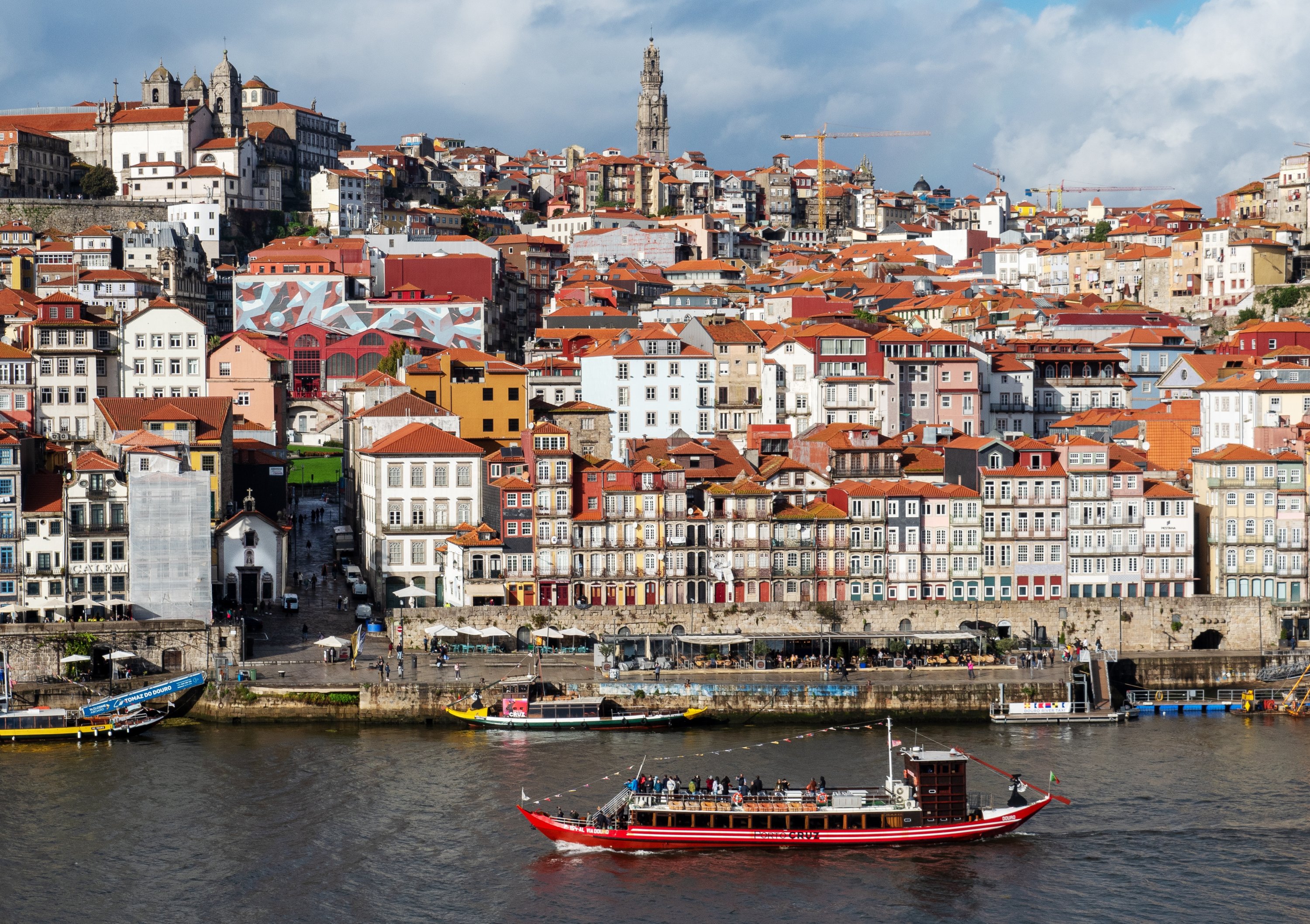© Turkuvaz Haberleşme ve Yayıncılık 2026
When thinking of Porto, the association with its expertise in port wine production is undeniable. However, this vibrant city, Portugal's second-largest, boasts a wealth of experiences beyond the delightful contents aging in its barrels.
Since the turn of the millennium, the formerly gloomy industrial hub has blossomed into an attractive tourist destination. "I have witnessed this radical change myself," said tour guide Joao Duarte Vieira: "Porto has become a brighter city."
Here are eight good reasons to visit this underexplored gem on the country's north-western Atlantic coast.
A boat trip on the Douro: A boat tour is a must in Porto. Over 50 minutes, you will glide by the old town's colorful arrays of 18th-century townhouses and beneath the city's stately bridges.
In places, the facades of houses and showcase views are crumbling – there's still a lot of regeneration to do here. Then, your boat will turn before the estuary to the Atlantic, with cormorants and seagulls coursing overhead and trams rumbling along the shoreline.
"PlanetCork": The avant-garde cultural district World of Wine, or WOW for short, holds the Planet Cork museum, dedicated to one of Portugal's top products. Peeled by hand from cork oaks every nine years, cork is famously used to seal bottles and as an insulating material in cricket balls or stylish cork leather bags.
Literary splendor: Reading is far from dead in the modern age, as you'll see in the Livraria Lello, one of the most beautiful bookshops in the world. It has queues to its doors, undeterred by the entrance fee of 8 euros ($8.5): "This can be offset against the purchase of a book," says employee Ana Teixeira.
The interior embodies early 20th-century elegance, set off by an elaborate curved staircase with floral reliefs. Hanging lanterns and railings decorate the gallery as part of the illusion. "Most people think that everything is made of wood," says Teixeira. "It's actually painted plaster that imitates wood."
Panoramic views: Not far from the historic bookshop, the Torre dos Clérigos is the next high point of your tour, literally. The baroque tower, a symbol of Porto, rises 75 meters (246 feet) like a guardian standing over the city.
In the past, the arrival of merchant ships was announced from its vantage. Today, you can enjoy marvelous 365-degree views from the top – once you ascend the 225 steps.
Serralves Museum: Portugal's star architect Alvaro Siza Vieira took his interplay of long corridors, halls and windows onto greenery, symmetries and asymmetries to the extreme in the Serralves Museum of Contemporary Art.
Its extensive gardens are permanently filled with sculptures, including works by Richard Serra and Claes Oldenburg. The Art Deco house in the park is also home to a fantastic exhibition of works by the late Spanish painter, sculptor and ceramicist Joan Miro.
The Igreja de So Francisco church: Nothing was too expensive and elaborate to remodel this Gothic church of the Franciscan order centuries later in the Baroque style. Its wood carvings were covered with 500 kilograms of gold leaf, and the ornate splendor was overwhelming.

These treasures didn't come from Portugal, but from the former colony of Brazil, says city guide Vieira, pointing out a striking contradiction: "The Franciscans were poor. Money had no value for them." Maybe the idea of securing a box seat in the kingdom of heaven with generous donations had something to do with that.
Train station tile art: Decorative tiles, known as azulejos, are Portugal's ubiquitous artworks. They adorn palaces, monasteries, courtyards, fountains, staircases and houses with everything from geometric motifs to plants and figures.
In the entrance hall of Porto's Sao Bento railway station, some 20,000 tiles take the art form to monumental heights. Extending to the ceiling, historical scenes unfold like picture books, making the station well worth a stop, not just for train travelers.
Bird's eye view by cable car: Try a short but intense hovering flight on the cable car that runs along the shore of Vila Nova de Gaia.
As you glide 50 meters over the city, Porto opens up to you in one admiring crane of the neck: the glistening Douro, the tiled roofs, the cathedral, the hallowed halls of port wine excellence. Sightseeing in such widescreen format doesn't get much better than this.
